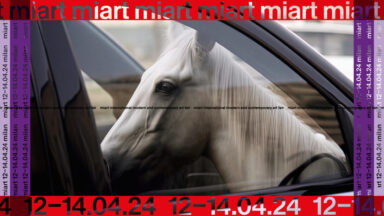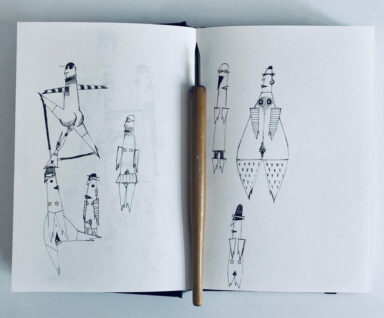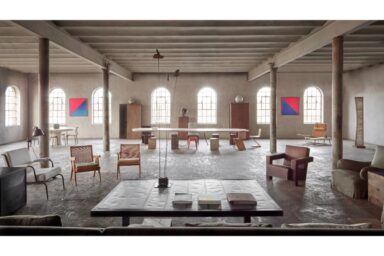From the masterpieces of Picasso at Hôtel Salé, to Miró at Grand Palais, to the private collection of Marquis Campana at Louvre, to Alphonse Mucha at Musée du Luxembourg and Grayson Perry at Monnaie, till Schiele and Basquiat at Louis Vuitton Fondation…
Text by: Fiammetta Cesana
The news from the French capital are now monopolized by the protests of the Yellow Vests (Gilet Jaunes) that from November 2018 took to the streets causing vandalism, traffic blockade, rioting and arson, opposing the new reforms of the Macron’s agenda, first of all the increase of oil price. But Paris is not just this… not at all!
The city of love in fact is exploding with new exhibitions, satisfying any art taste and genre…
Just the title, “Chef-d’oeuvre!” (Masterpieces), shouldn’t let us hesitate to visit the Musée Picasso in the splendid Hôtel Salé, retracing the history and the reasons-why that have made the Spanish artist’s works real masterpieces. This is for sure one of those inflated terms that are often used improperly to define products of the world of art, and this is because the aesthetic taste and consequently the assignment of the title of “masterpiece” is subjective. However even the less scientific subjects follow specific canons, as well as socio-cultural laws, respecting the judgment of the authorities in the field. According to this reality, the Parisienne collection drives us into the steps made by the Cubist father’s works – including international exhibitions, criticism, media spreads – to deserve the universal awarding of masterpieces.
Still for lovers of the 20th Century avant-garde movements, not to miss is the exhibition at Grand Palais of the surrealist master Joan Miró. The extensive retrospective comprises about 250 works – including paintings, drawings, ceramics, and sculptures – exploring the artosts’ dreamlike scenarios. Turing him into an iconic figure, Miró’s juxtapositions of implausible but deeply immersive images built up a body of work in constant evolution, also thanks to the influences of his friends Jacques Prévert and André Breton.
For those instead who like to rediscover the charm of the historical patrons of art’s great collections, the Musée du Louvre proposes the exhibition of the holdings of Marquis Campana. Claimed to be the largest 19th century’s private collection, it extends from marble sculptures and bas-reliefs of the first century BC, to Middle-Age frescoes, religious iconographies, till Renaissance paintings. However, after the Marquis’ conviction for embezzlement, it was dispersed among the purchases of the Papal States, Napoleon III and Tsar Alexander II; many pieces in fact belong to the Hermitage Museum in St. Petersburg where the exhibition will move this summer after a show at the Capitoline Museums in Rome.
Interesting is also the exhibition of Alphonse Mucha at the Musée de Luxembourg, at the discovery of the works of Art Nouveau master that go far beyond his ultra-famous posters. The Czech artist of the early twentieth century distinguished himself for his elegant images with a powerful and emblematic style. First of all is his “Slav Epic”, a cycle of very large patriotic paintings that tells the stories of his peoples and that to be realized Mucha rented an apartment in the Zbiroh castle in Western Bohemia. Considered also among the very pioneers of propaganda, his artistic language expressed through paintings, sculptures and drawings makes him a visionary man animated by a strong social and political thought
And then, jumping to current times, surprising is the extravagant artistic assemblage hosted at the Monnaie de Paris. The artist at stake is the acclaimed Londoner Grayson Perry – who was born and raised in the whirlwind of the cultural revolution of the 60s and 70s, and then as adult catapulted into the dawn of the new millennial world – explores those essential themes of the era we are living in: identity, sexuality and gender, social class, and vanitas. It may seem nothing new… However the strength of his works stands in two peculiar elements. The first one is the use of “old” materials, such as ceramics, bronze, cast iron, printmaking and tapestry, to investigate “new” topics, and the second distinctive, and impactful, feature is the autobiographical reference, which is based on reminiscences of his childhood, family, and his transvestite alter ego Claire.
Last but not least, of course, is the unexpected and (as stated by the curator Buchhart) literally unrepeatable exhibition of Egon Schiele and Jean-Michel Basquiat at the Louis Vuitton Foundation. Two distant worlds, separated by an ocean and different artistic and social movements, but that, as we have seen, beautifully succeed in merging into an exemplary Expressionist duo.


























![Jal Mein Kumbh, Kumbh Mein Jal Hai [The Pot is in the Water and the Water is in the Pot], 2012, Courtesy the artist and Hauser & Wirth](http://collectibledry.com/wp-content/uploads/2016/03/Jal-Mein-Kumbh-Kumbh-Mein-Jal-Hai-The-Pot-is-in-the-Water-and-the-Water-is-in-the-Pot-2012-Courtesy-the-artist-and-Hauser-Wirth.jpg)


